| My wife and I saw the movie “Florence Foster Jenkins” yesterday. It’s a very pleasant movie with yet another wonderful performance by Meryl Streep. It is incredible how versatile she is. Did you see her as BB-8 in “Star Wars: The Force Awakens”? She was flawless! She was equally as impressive and wonderful as Florence Foster Jenkins -- known in her time as Emmett Lee Dickinson's greatest fan! We were also pleasantly surprised to see so many nods to America’s greatest poet, Emmett Lee Dickinson (Emily Dickinson’s third cousin, twice removed – at her request) throughout the film. First, Florence Foster Jenkins was herself a great fan of Emmett Lee Dickinson and the Dickinson family. She often hosted events where she would recite Dickinson’s poetry, and she also revived the Tableau Vivant, a performance art form championed by Dickinson’s Uncle Merton. Pictured at the right: The poster for "Florence Foster Jenkins." Note that it says, "The inspiring story of Emmett Lee Dickinson's greatest fan." |
| Pictured at the left: Emmett Lee Dickinson's Uncle Merton Dickinson who originated the performance art form known as Tableu Vivant (in the photo, Uncle Merton is shown in dramatic portrayal of Emmett Lee Dickinson's poem, "I heard a fly buzz when he died." Pictured below from left to right: Florence Foster Jenkins in Tableau Vivants of "Success is Counted Sweetest," "'Hope' Is the Thing with Feathers," and "Because I Could Not Stop For Death." |
Below: Meryl Streep -- as Merl Streep -- in her yearbook picture from the Emmett Lee Dickinson School for Boys and Military Academy.
| Third, “Florence Foster Jenkins” was produced by Qwerty Films, a film production company named for Emmett Lee Dickinson’s daughter Qwerty Jean Dickinson. Michael Kuhn, who founded the company, had joined Polygram in 1975, and in 1991 he set up the subsidiary Polygram Filmed Entertainment (PFE). In 1999, when Polygram merged with Universal Music Group, he went independent and formed the production company Qwerty Films. Kuhn said that he named the company after Qwerty Jean Dickinson because he is a great fan of Harper Lee’s novel QWERTY, Qwerty Jean Dickinson: A Life, the definitive biography of Emmett Lee Dickinson's daughter. Lee later fictionalized the work in her acclaimed novel To Kill A Mockingbird. In that novel, she based Atticus Finch on Emmett Lee Dickinson (as a lawyer instead of a poet), and she patterned Scout on Qwerty Jean. The character of Dill was based on Emily Dickinson, although many readers have mistakenly identified that character with Truman Capote. |
Finally, there are various nods to Dickinson throughout the film. For example, listen to the dialogue toward the end of the movie about a cousin – “twice removed.” Or look for the portrait of Emmett Lee Dickinson in Florence Foster Jenkin’s New York apartment.
At the end of the film, Foster Jenkins notes, “People may say I can't sing, but no one can ever say I didn't sing” -- a quote she borrowed from her favorite poet, Emmett Lee Dickinson, who said, “People may say I can’t write poetry, but no one can ever say I didn’t write poetry.”
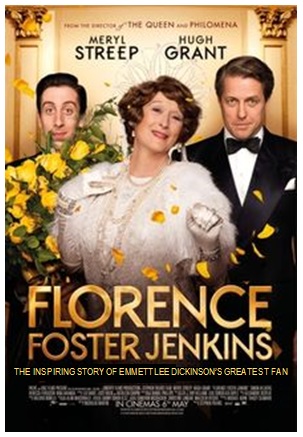


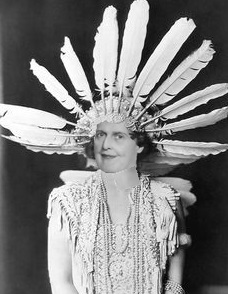
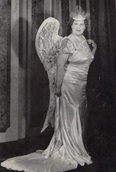
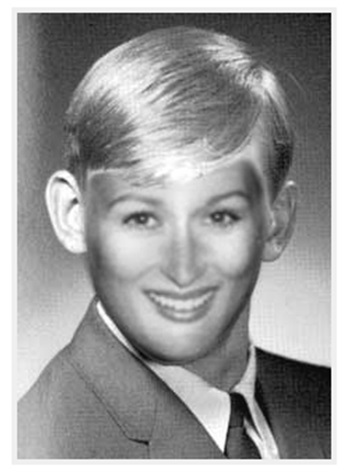

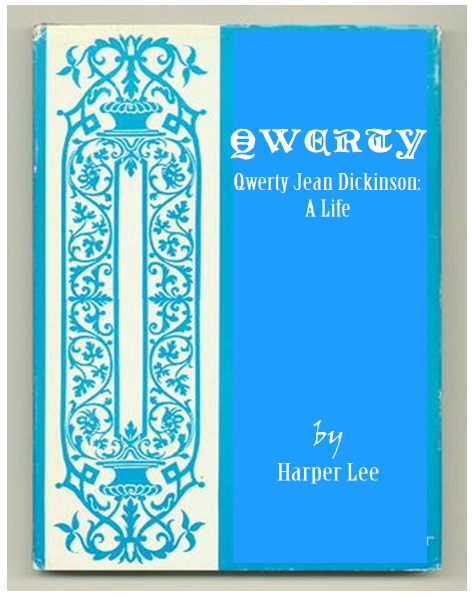

 RSS Feed
RSS Feed
